
 Why, exactly, is Cheryl reviewing a book about William Blake in a magazine about science fiction and fantasy? Well, because alongside Tolkien, Blake is Britain’s greatest mythographer. One could make a case for Geoffrey of Monmouth as well, but it seems likely that he stitched together his history of Britain from folk tales already extant at the time, whereas Blake and Tolkien were both engaged in substantial creative activities.
Why, exactly, is Cheryl reviewing a book about William Blake in a magazine about science fiction and fantasy? Well, because alongside Tolkien, Blake is Britain’s greatest mythographer. One could make a case for Geoffrey of Monmouth as well, but it seems likely that he stitched together his history of Britain from folk tales already extant at the time, whereas Blake and Tolkien were both engaged in substantial creative activities.
Blake himself probably wouldn’t have seen it that way. He is more likely to have said that he was just explaining the world the way that it was, and that everyone else’s understanding of Christianity and the Bible was wrong. He was idiosyncratic and stubborn like that. But one of the interesting claims made in John Higgs’ book, William Blake vs The World, is that Blake benefited from a something similar the synaesthesia, and actually did see the visions that he claimed he saw, without any aid from mushrooms and the like.
Of course, my own interest in the book was also historical. Having had to do a deep dive into 18th Century ideas about gender for a talk on Charlotte de Beaumont, I was hoping that a book about Blake might further enlighten me. Sadly Higgs is not overly interested in Blake’s ideas about gender. He does indicate that is aware of the issue, noting:
Blake appears to have been cisgendered and heterosexual, but there may have been a transgender aspect to his sense of self when it was let free in his imagination.
So Higgs is familiar with the terminology of trans issues. Also he later lumps Mumsnet in with 4chan and the Mail Online as examples of places people who want to live in Hell might choose to frequent. However, he doesn’t really follow up on Blake’s interest in androgyny. Higgs has also left me wanting to know a lot more about an 18th Century Christian sect known as the Moravians, of which he writes:
The Moravians preached that union with Christ could be achieved through both marital and extramarital sex and gender transgression. Each individual Christian was considered to be the bride of Christ, and therefore female in terms of spiritual sexuality. They practiced visualisation exercises, which focused on the wound in Jesus’s side, in order to better understand the spiritual nature of being penetrated by the male Christ.
Apparently modern-day Moravians have deviated sharply from these teachings.
Of course Higgs’s book isn’t really a history book, it is a book about Blake. Fortunately for him, it is not his job to explain the 18th Century to us. Explaining Blake is quite a big enough job for anyone. When he does get into history he’s liable to mess up, such as here:
Many early Christian thinkers saw the material body as the prison of the immaterial soul, and henceforth something to be despised. The practice of self-flagellation which runs throughout Christian history is a product of ideas such as this, although thankfully few took it to the lengths of the third-century Christian theologian Origen of Alexandria, who is said to have castrated himself for God.
Higgs seems unaware that, while there is no proof that Origen was castrated, becoming a eunuch to demonstrate one’s piety was very popular in the Byzantine empire and hundreds, if not thousands of Christian monks did so.
But let’s get back to mythography. The world that Blake created was very different from Tolkien’s in many ways, because Blake was trying to understand the real world as he saw it, whereas Tolkien was very clear that he was practicing subcreation. Nevertheless, comparisons can be drawn and Higgs does not shirk from the challenge. He writes:
If we were to compare his writings to that of the later English mythmaker J.R.R. Tolkien, then Songs of Innocence and of Experience was Blake’s Hobbit, the Bible of Hell was his Lord of the Rings, and his nineteenth-century works were his Silmarilion.
I am not sufficiently well versed in either the works of Blake or of Tolkien to comment on the veracity of that comparison, but it is interesting that it has been made.
The other obvious connection between Tolkien and Blake is that both make use of the name “orc” for a violent adversary. In Tolkien orcs are a species of violent creatures bred by Melkor in mockery of the elves. In Blake Orc is a spirit of violence and destruction and an enemy of Urizen, the embodiment of authority.
The connection between the two orcs is somewhat nebulous. For example, here Matthew David Surridge is adamant that Tolkien’s orcs have no etymological connection to Blake. The accepted wisdom is that Tolkien took “orc” from the word “orcneas” which comes from a line in Beowulf listing “eotenas ond ylfe ond orcneas” as various enemies of God. Tolkien says as much in a letter to Naomi Mitchison. But he also says that he chose the word for its sound as much anything else.
As a professor of English at Oxford, Tolkien must have been aware of Blake. He was probably also aware that Blake created the character of Orc as a spirit of violent revolution, not in response to events in France, which were then still in his future, but following his witnessing of the Gordon Riots in London. In these riots, an anti-Catholic mob stormed the city’s prisons, ostensibly to free their colleagues held within. Catholic churches and the homes of Catholic notables were also attacked and looted. Over the space of a week, 850 people were killed in the rioting. Tolkien, being a devout Catholic, may have taken note of this.
Incidentally, the Gordon Riots were named after a populist politician whose intemperate ranting had inspired them. Higgs notes:
George Gordon was sent away as a child and bullied at Eton, then entered the Navy where he was considered ‘a damned nuisance wholly unsuitable for promotion.’ A seat in parliament was subsequently bought for him, where he was considered something of a joke. Privileged, narcissistic and generally mediocre, personalities like Gordon are sadly familiar in this history of populist violence.
Like Higgs, I will leave it to the reader to discern which contemporary politician might be being referenced here.
The key element of Blake’s mythmaking, and something that sharply distinguishes him from the many Tolkien imitators in epic fantasy, if not entirely from Tolkien himself, is his belief in the inappropriateness of demarcation. Blake lived at a time when a rush of new discoveries in science was encouraging intellectuals to sort the world into boxes. Categorisation was the fashion. And with it came a passion for abandoning nuance and concentrating on difference. We are still living with the effects of that today.
This application of reason to sort everything into its place was seen by Blake as the triumph of Urizen, the authoritarian god of rationality, whom Blake characterised in ways very similar to the god of the Old Testament (most famously in the artwork on this issue’s cover). But Urizen was only one of four related deities, the “four zoas”. The others – Urthona (creativity), Luvah (emotion) and Tharmas (physical senses) – were, in Blake’s view, lessened by the triumph of Urizen, and the world was poorer for their being side-lined.
Blake lived to see and be horrified by the Napoleonic Wars, which touched much of the known world at the time. He would have seen Urizen very much at work in the Nazi focus on eliminating people they deemed inferior but would probably have despaired at the need for the likes of Churchill and Stalin to lead the resistance against Hitler. If he were alive today, he would probably be railing against the far right and its quest to set everyone against everyone else.
The greatest irony of Blake’s legacy is that a hymn he wrote calling for the tearing down of the establishment, and poking fun at places such as Eton, is now seen as the embodiment of the myth of English superiority. If anyone out there is writing epic fantasy, what the world needs now, and England needs in particular, is a little more William Blake in its mythology, and a little less focus on Good v Evil.
 Title:
Title: William Blake vs The World
By: John HiggsPublisher: Orion
Purchase links:Amazon UKAmazon USBookshop.org UKSee
here for information about buying books though
Salon Futura

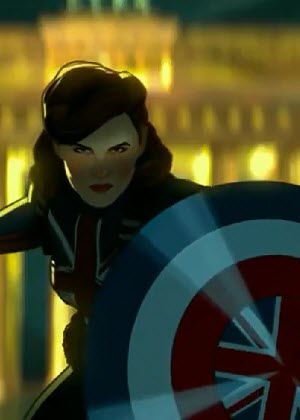 Well, the MCU had to mess up at some point, and I guess it is better that they did so in a cartoon series than in a live action movie. Having said that, it rather suggests that less care and attention was paid to What If? Because it is only a cartoon.
Well, the MCU had to mess up at some point, and I guess it is better that they did so in a cartoon series than in a live action movie. Having said that, it rather suggests that less care and attention was paid to What If? Because it is only a cartoon.
 BristolCon has just happened. That it did is something of a minor miracle because COVID is raging out of control here on Plague Island. However, most of us are now double-vaccinated. A reasonable proportion of us are aware that the virus is airborne, and that precautions can be taken. Many of us are just fed up of the isolation.
BristolCon has just happened. That it did is something of a minor miracle because COVID is raging out of control here on Plague Island. However, most of us are now double-vaccinated. A reasonable proportion of us are aware that the virus is airborne, and that precautions can be taken. Many of us are just fed up of the isolation.

 This is the September 2021 issue of Salon Futura. Here are the contents.
This is the September 2021 issue of Salon Futura. Here are the contents. The Witness for the Dead
The Witness for the Dead Chilling Effect
Chilling Effect In the Watchful City
In the Watchful City Ife-Iyoku
Ife-Iyoku Light Chaser
Light Chaser Occasional Views
Occasional Views FantasyCon 2021
FantasyCon 2021 He-Man Wars
He-Man Wars Editorial – September 2021
Editorial – September 2021
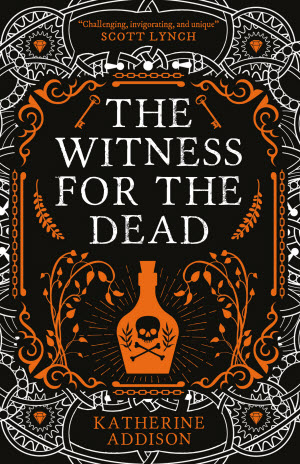 For reasons that I can no longer remember, I did not write a review of Katherine Addison’s The Goblin Emperor. It certainly wasn’t because I didn’t like the book. It was excellent. But it was also a stand-alone, and since 2014 a lot of people have been hoping for another story in the same world. The book was a finalist for the Hugo, Nebula and World Fantasy Awards, and won the Locus Award for Best Fantasy Novel. A sequel would have been an easy sell.
For reasons that I can no longer remember, I did not write a review of Katherine Addison’s The Goblin Emperor. It certainly wasn’t because I didn’t like the book. It was excellent. But it was also a stand-alone, and since 2014 a lot of people have been hoping for another story in the same world. The book was a finalist for the Hugo, Nebula and World Fantasy Awards, and won the Locus Award for Best Fantasy Novel. A sequel would have been an easy sell.
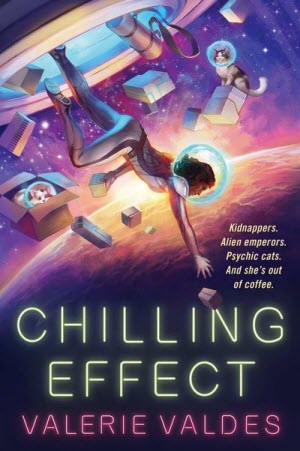 The lovely people at Mr B’s in Bath had a display up of Clarke Award finalists. I hadn’t read all of them, and decided to take a look. I did not manage to pick the winner, which was The Animals in that Country by Laura Jean McKay. I’ll get to that one eventually. But I was going off covers and blurbs, so the book that caught my eye was Chilling Effect by Valerie Valdes. It promised space opera and psychic cats. Now admittedly that’s not the sort of sophisticated literary novel that usually attracts the Clarke judges, but how could I go wrong?
The lovely people at Mr B’s in Bath had a display up of Clarke Award finalists. I hadn’t read all of them, and decided to take a look. I did not manage to pick the winner, which was The Animals in that Country by Laura Jean McKay. I’ll get to that one eventually. But I was going off covers and blurbs, so the book that caught my eye was Chilling Effect by Valerie Valdes. It promised space opera and psychic cats. Now admittedly that’s not the sort of sophisticated literary novel that usually attracts the Clarke judges, but how could I go wrong?
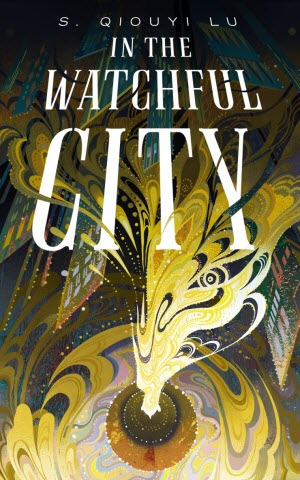 Somewhere in the far future there is a city called Ora that takes good care of its citizens. It watches them, very carefully, for any sign of discontent. It would not do for any of them to be unhappy, or doing anything illegal, would it?
Somewhere in the far future there is a city called Ora that takes good care of its citizens. It watches them, very carefully, for any sign of discontent. It would not do for any of them to be unhappy, or doing anything illegal, would it?
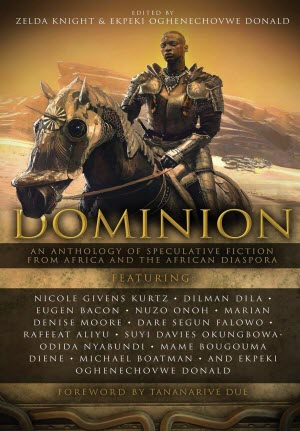 This year’s Otherwise Award (formerly the Tiptree) has gone to a novella published in the anthology, Dominion: An Anthology of Speculative Fiction from Africa and the African Diaspora. The story is by Oghenechovwe Donald Ekpeki who also co-edited the anthology with Zelda Knight. I’ve not had a chance to read the whole anthology yet, but I have read the winning story, and I can see why it won.
This year’s Otherwise Award (formerly the Tiptree) has gone to a novella published in the anthology, Dominion: An Anthology of Speculative Fiction from Africa and the African Diaspora. The story is by Oghenechovwe Donald Ekpeki who also co-edited the anthology with Zelda Knight. I’ve not had a chance to read the whole anthology yet, but I have read the winning story, and I can see why it won.
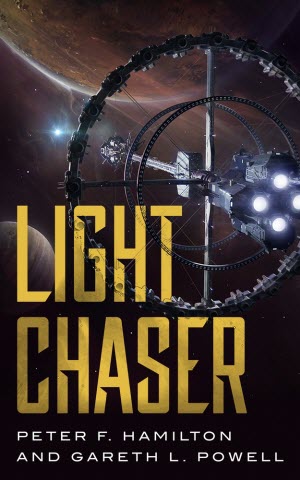 A few years back a mystery object given the name, ’Oumuamua, visited our solar system. The consensus of opinion amongst astronomers was that it was a large lump of rock. Others speculated that it might be a well camouflaged space craft.
A few years back a mystery object given the name, ’Oumuamua, visited our solar system. The consensus of opinion amongst astronomers was that it was a large lump of rock. Others speculated that it might be a well camouflaged space craft.
 Slowly but surely, Wesleyan University Press has been bringing out a number of volumes collecting the non-fiction work of Samuel R Delany. Occasional Views: Volume 1 – “More About Writing” and Other Essays is the latest in that series. There are quite a few essays in the book, on a wide variety of topics. I’m still working my way through them. But I wanted to write a review now because some of the essays touch on issues of racism and homophobia. Delany has been part of the industry for a very long time, and his experiences are thus instructive. I’m going to pick just one example, from 1977.
Slowly but surely, Wesleyan University Press has been bringing out a number of volumes collecting the non-fiction work of Samuel R Delany. Occasional Views: Volume 1 – “More About Writing” and Other Essays is the latest in that series. There are quite a few essays in the book, on a wide variety of topics. I’m still working my way through them. But I wanted to write a review now because some of the essays touch on issues of racism and homophobia. Delany has been part of the industry for a very long time, and his experiences are thus instructive. I’m going to pick just one example, from 1977.
 Dear Goddess, an in-person convention! How did that happen?
Dear Goddess, an in-person convention! How did that happen? There’s nothing like success to prompt Hollywood into doing more of the same. Therefore, off the back of Noelle Stevenson’s brilliant reboot of She-Ra, we have not one, but two new reboots of He-Man and the Masters of the Universe. Both are available on Netflix, but they are very different.
There’s nothing like success to prompt Hollywood into doing more of the same. Therefore, off the back of Noelle Stevenson’s brilliant reboot of She-Ra, we have not one, but two new reboots of He-Man and the Masters of the Universe. Both are available on Netflix, but they are very different.
 This is the July 2021 issue of Salon Futura. Here are the contents.
This is the July 2021 issue of Salon Futura. Here are the contents. Loki – Season 1
Loki – Season 1 A Strange and Brilliant Light
A Strange and Brilliant Light William Blake vs The World
William Blake vs The World Riot Baby
Riot Baby Worlds Apart
Worlds Apart Raya and the Last Dragon
Raya and the Last Dragon
 SPOILER ALERT
SPOILER ALERT I don’t get many review copies these days, but every so often Jo Fletcher sends me something that she thinks might be of interest. A Strange and Brilliant Light is one such book. It is a debut novel by Eli Lee, and Jo was quite right to think I would find it interesting.
I don’t get many review copies these days, but every so often Jo Fletcher sends me something that she thinks might be of interest. A Strange and Brilliant Light is one such book. It is a debut novel by Eli Lee, and Jo was quite right to think I would find it interesting.
 Why, exactly, is Cheryl reviewing a book about William Blake in a magazine about science fiction and fantasy? Well, because alongside Tolkien, Blake is Britain’s greatest mythographer. One could make a case for Geoffrey of Monmouth as well, but it seems likely that he stitched together his history of Britain from folk tales already extant at the time, whereas Blake and Tolkien were both engaged in substantial creative activities.
Why, exactly, is Cheryl reviewing a book about William Blake in a magazine about science fiction and fantasy? Well, because alongside Tolkien, Blake is Britain’s greatest mythographer. One could make a case for Geoffrey of Monmouth as well, but it seems likely that he stitched together his history of Britain from folk tales already extant at the time, whereas Blake and Tolkien were both engaged in substantial creative activities.
 It is a good job that Worldcon is later in the year this year, because I have only just made a start on my Hugo reading. Then again, three of the Novella finalists are works I had nominated (and I have read five of the Novels), so I’m in a pretty good position.
It is a good job that Worldcon is later in the year this year, because I have only just made a start on my Hugo reading. Then again, three of the Novella finalists are works I had nominated (and I have read five of the Novels), so I’m in a pretty good position.
 This is less of a review and more of an advertorial, because I have an essay in this book. Worlds Apart: Worldbuilding in Fantasy and Science Fiction (to give it its full title) is the latest volume in the Academia Lunare series from Luna Press Publishing, edited by Francesca T Barbini. My essay is titled, “Worldbuilding with Sex and Gender”, and it full of good ideas for making your aliens queer. That’s enough of that. What else is in the book?
This is less of a review and more of an advertorial, because I have an essay in this book. Worlds Apart: Worldbuilding in Fantasy and Science Fiction (to give it its full title) is the latest volume in the Academia Lunare series from Luna Press Publishing, edited by Francesca T Barbini. My essay is titled, “Worldbuilding with Sex and Gender”, and it full of good ideas for making your aliens queer. That’s enough of that. What else is in the book?
 Well, that was very Disney. Then again, what should I expect?
Well, that was very Disney. Then again, what should I expect?
 This is the June 2021 issue of Salon Futura. Here are the contents.
This is the June 2021 issue of Salon Futura. Here are the contents. Shards of Earth
Shards of Earth The Album of Dr. Moreau
The Album of Dr. Moreau QualityLand
QualityLand Worldcon Drama Again
Worldcon Drama Again Blackheart Knights
Blackheart Knights Birds of Prey
Birds of Prey Red Dust
Red Dust As is often this case, this month’s cover comes from PixaBay. The artist is
As is often this case, this month’s cover comes from PixaBay. The artist is 
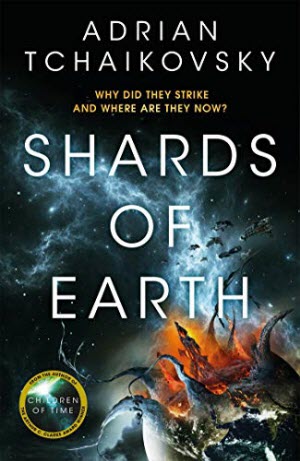 I have been meaning to catch up with Adrian Tchaikovsky’s work for some time. He’s clearly on the cutting edge of modern SF, and I’ve really enjoyed the readings I have heard him do. All I needed was a suitable entry point; a new series that I could make a start on. Shards of Earth fits the bill nicely.
I have been meaning to catch up with Adrian Tchaikovsky’s work for some time. He’s clearly on the cutting edge of modern SF, and I’ve really enjoyed the readings I have heard him do. All I needed was a suitable entry point; a new series that I could make a start on. Shards of Earth fits the bill nicely.
 What if the creatures from The Island of Dr Moreau escaped, moved to the USA, and started a boy band?
What if the creatures from The Island of Dr Moreau escaped, moved to the USA, and started a boy band?
 In the near future, Germany, or possibly the EU, has taken the sensible step of declaring itself to be the Best Possible Country. Welcome to QualityLand, where life has never been better, and everyone has exactly what they want.
In the near future, Germany, or possibly the EU, has taken the sensible step of declaring itself to be the Best Possible Country. Welcome to QualityLand, where life has never been better, and everyone has exactly what they want.
 Another month, another meltdown on the Worldcon/Hugos front. Can’t we be better than this? Apparently not.
Another month, another meltdown on the Worldcon/Hugos front. Can’t we be better than this? Apparently not.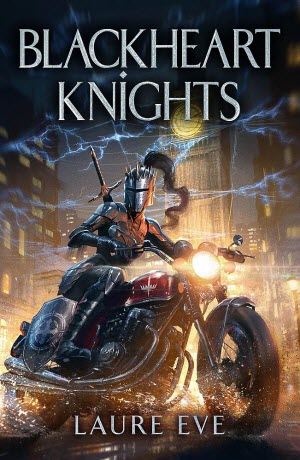 Arthuriana is clearly in the air at the moment. We have had the massively different takes of Legendborn and SisterSong, both of which I loved. We have Spear due from Nicola Griffith coming very soon. And we also have Blackheart Knights from Laure Eve. It has a woman in armour on a motorbike on the cover. How could I possibly resist?
Arthuriana is clearly in the air at the moment. We have had the massively different takes of Legendborn and SisterSong, both of which I loved. We have Spear due from Nicola Griffith coming very soon. And we also have Blackheart Knights from Laure Eve. It has a woman in armour on a motorbike on the cover. How could I possibly resist?
 OK, before I start I have to explain something. Leopards and hyenas are natural enemies. Firstly, the lazy bastards keep stealing our prey by ganging up on us in huge numbers. And secondly, unlike leopards who are creatures of impeccable taste, hyenas are exactly the sort of vile creatures who would eat people’s faces. It was probably them who started that horrible meme in the first place.
OK, before I start I have to explain something. Leopards and hyenas are natural enemies. Firstly, the lazy bastards keep stealing our prey by ganging up on us in huge numbers. And secondly, unlike leopards who are creatures of impeccable taste, hyenas are exactly the sort of vile creatures who would eat people’s faces. It was probably them who started that horrible meme in the first place. Yoss, I am told, is a legend of Cuban science fiction. I am ashamed to say that this book is the first I had heard of him. If you haven’t either, there’s an interview with him
Yoss, I am told, is a legend of Cuban science fiction. I am ashamed to say that this book is the first I had heard of him. If you haven’t either, there’s an interview with him 

 This is the May 2021 issue of Salon Futura. Here are the contents.
This is the May 2021 issue of Salon Futura. Here are the contents. A Master of Djinn
A Master of Djinn Fugitive Telemetry
Fugitive Telemetry Defekt
Defekt The Vanished Birds
The Vanished Birds Requiem Moon
Requiem Moon The Old Guard
The Old Guard Wonder Woman 1984
Wonder Woman 1984 In honour of a new P. Djèlí Clark book, we have a steampunk cover for this issue. Image by
In honour of a new P. Djèlí Clark book, we have a steampunk cover for this issue. Image by 
 This is a book I have been wanting for some time. Pretty much since I finished reading The Haunting of Tram Car 015 to be precise. I didn’t know then that a novel was in the works, but I am very pleased that it was.
This is a book I have been wanting for some time. Pretty much since I finished reading The Haunting of Tram Car 015 to be precise. I didn’t know then that a novel was in the works, but I am very pleased that it was.
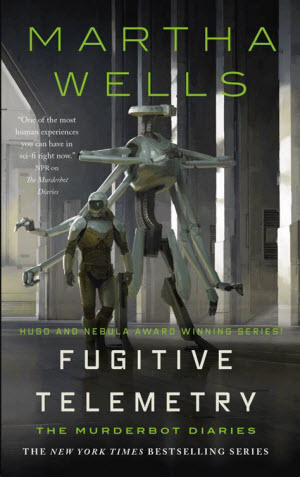 What can you say about a new Murderbot book? Surely you all know the set-up by now? Martha Wells doesn’t have to do much beyond roll her beloved creation on stage and let readers watch him in action. How long can she keep this up for? Well, The Rise and Fall of Sanctuary Moon has at least 397 episodes. Surely Murderbot will want to last at least as long as its favourite soap opera.
What can you say about a new Murderbot book? Surely you all know the set-up by now? Martha Wells doesn’t have to do much beyond roll her beloved creation on stage and let readers watch him in action. How long can she keep this up for? Well, The Rise and Fall of Sanctuary Moon has at least 397 episodes. Surely Murderbot will want to last at least as long as its favourite soap opera.
 Welcome back to the wild and whacky world of LitenVärld. Yes, the world needs more silly stories about weird Scandinavian megastores selling flatpack furniture, and Nino Cipri is just the person to provide them.
Welcome back to the wild and whacky world of LitenVärld. Yes, the world needs more silly stories about weird Scandinavian megastores selling flatpack furniture, and Nino Cipri is just the person to provide them.
 Simon Jimenez is one of the finalists for this year’s Astounding Award. I had been unaware of his debut novel until recently. It is now in the top ten list for Debut Novel in this year’s Locus Awards. And the other day Roz Kaveney phoned me up to rave about it. I can take a hint.
Simon Jimenez is one of the finalists for this year’s Astounding Award. I had been unaware of his debut novel until recently. It is now in the top ten list for Debut Novel in this year’s Locus Awards. And the other day Roz Kaveney phoned me up to rave about it. I can take a hint.
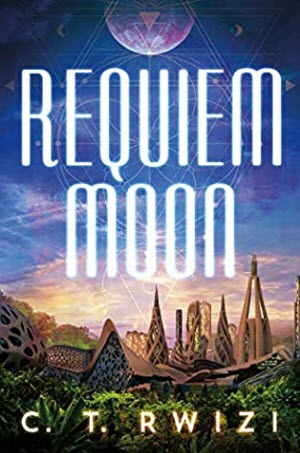 Having enjoyed Scarlet Odyssey, I was very pleased when Julie Crisp offered me book 2 in the series, Requiem Moon. This is what I’m assuming is book 2 of a trilogy, so CT Rwizi has his work cut out making it more than just moving the plot along. Mostly, I think, he succeeds, because he provides a story to anchor this book. This review will contain spoilers for book 1.
Having enjoyed Scarlet Odyssey, I was very pleased when Julie Crisp offered me book 2 in the series, Requiem Moon. This is what I’m assuming is book 2 of a trilogy, so CT Rwizi has his work cut out making it more than just moving the plot along. Mostly, I think, he succeeds, because he provides a story to anchor this book. This review will contain spoilers for book 1.